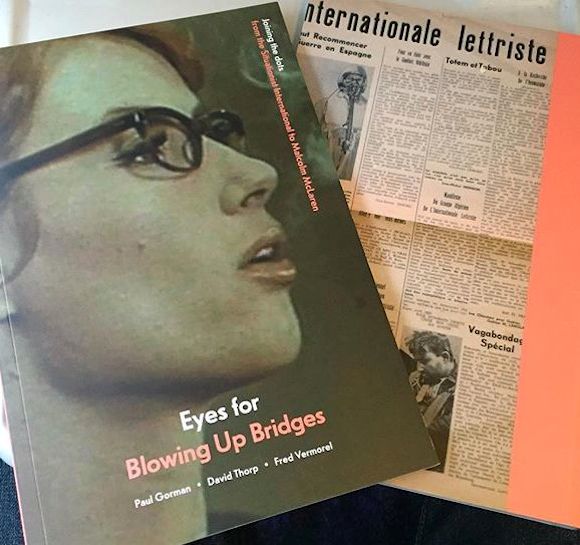
//Front and back cover designs//

//Pages on McLaren including image of the 1977 God Save The Queen muslin top designed with Vivienne Westwood and featuring Jamie Reid’s graphic and lyrics for the Sex Pistols track//
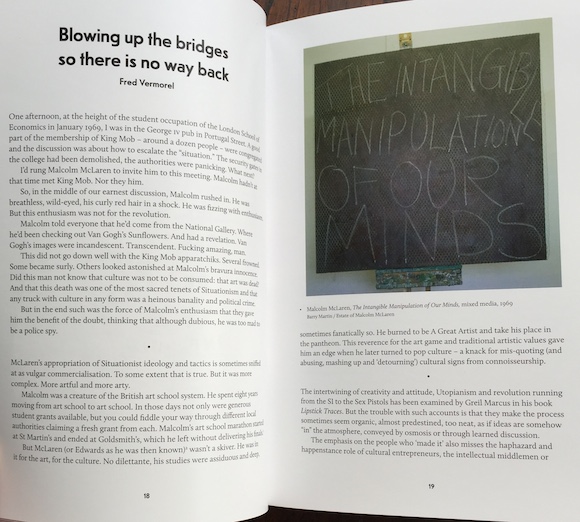
//Vermorel’s memoir includes images of McLaren’s student work such as this mixed media piece produced while on a fine art course at Goldsmith’s College in 1969//
Considered as an artwork, a two-and-a-half year project, and in its own terms, McLaren’s Sex Pistols’ was as seminal and resonant as Picasso’s Guernica.
Only this was a masterpiece made not of paint and canvas but of headlines and scandal, scams and factoids, rumour and fashion, slogans, fantasies and images and (I almost forgot) songs, all in a headlong scramble to auto-destruction.
For it was equally a Situationist treatise-by-example, the unremitting and obdurate core being McLaren’s grasp of the theory of situations as proposed by the SI.
Indeed, the story of the Pistols is a Situationist textbook of how to create situations from which there is no return. You refuse to negotiate, to compromise, to be co-opted, you exacerbate every crisis and recklessly play loser wins and then you blow up all the bridges so then there is no way back.
We are then forced to invent another future. Or maybe simply relish the mess, “the ecstasy of making things worse”.
From Fred Vermorel’s memoir which appears exclusively in the new exhibition catalogue.
The catalogue for the exhibition Eyes For Blowing Up Bridges is now available.
The lavishly illustrated 100-page book includes a foreword by John Hansard Gallery’s Ros Carter and Stephen Foster, my introduction, an essay by co-curator David Thorp and a specially commissioned memoir of Malcolm McLaren and his connections to post-war radicals by his art-school friend and collaborator Fred Vermorel.
Read the rest of this entry »
Tags: Adrian hunt, Alexander Trocchi, Cornerhouse Books, David Thorp, Fred Vermorel, Guernica, Guy Debord, John Hansard Gallery, King Mob, Lewis Leathers, Peel + Lift, Picasso, Ros Carter, Sex Pistols, Situationist International, Situationist International: John McCready Archive, Stephen Foster
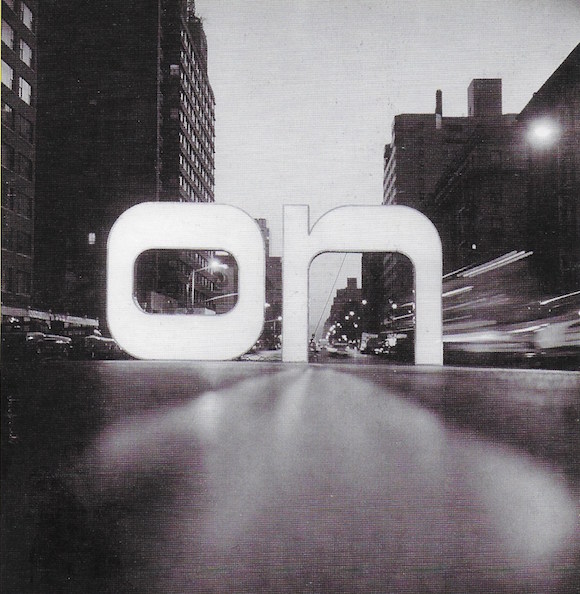
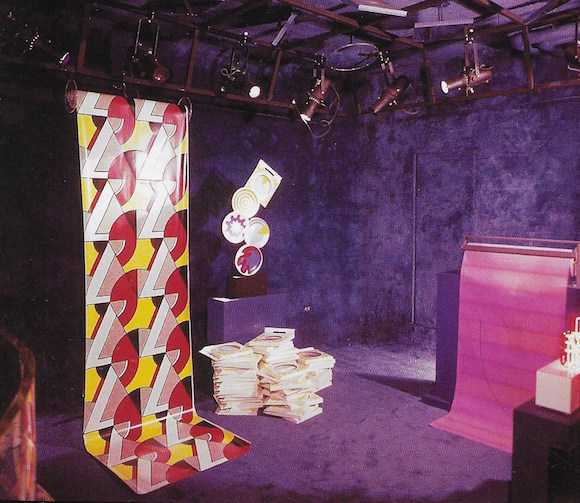



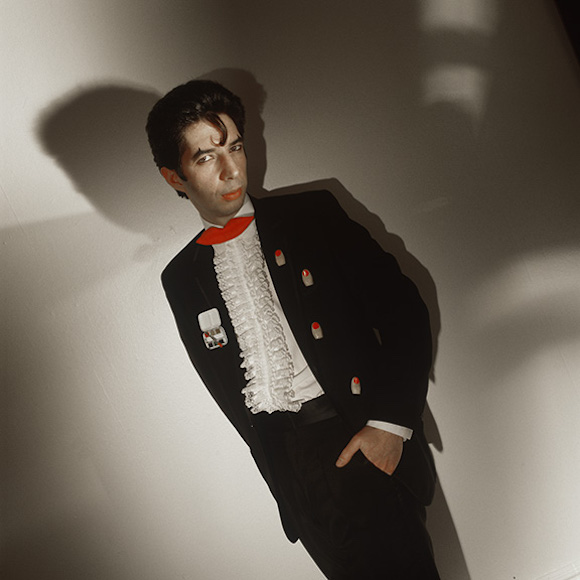
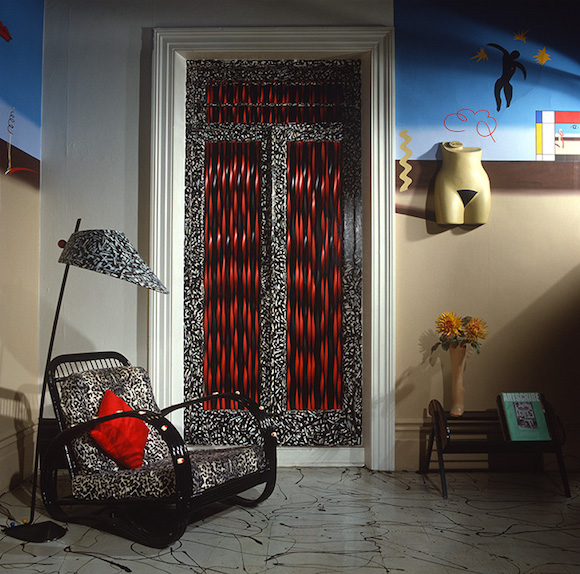

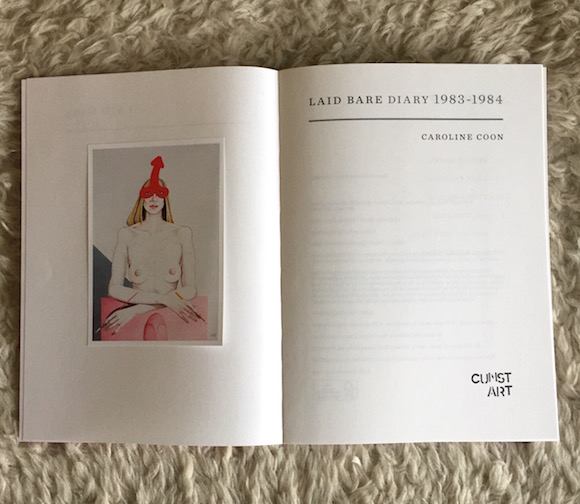

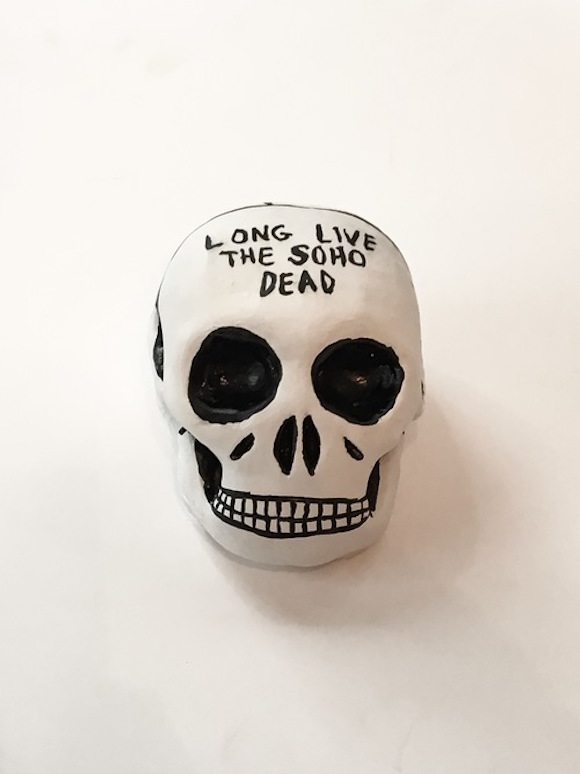
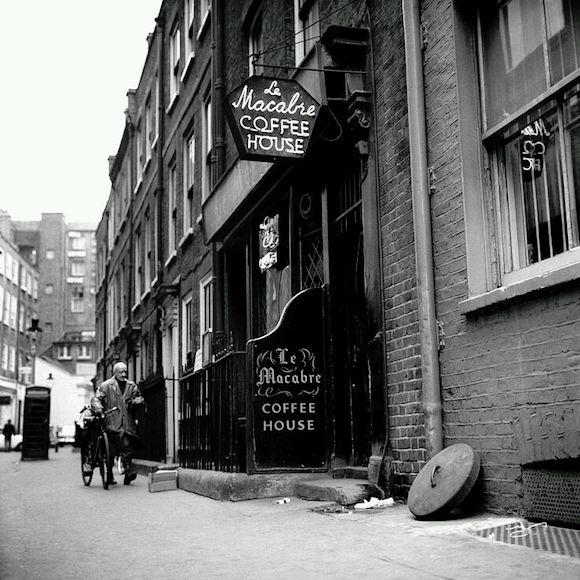




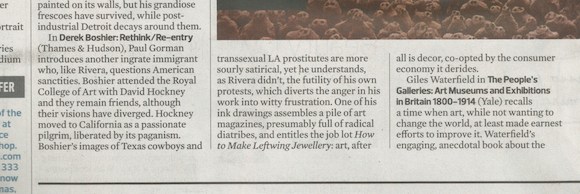

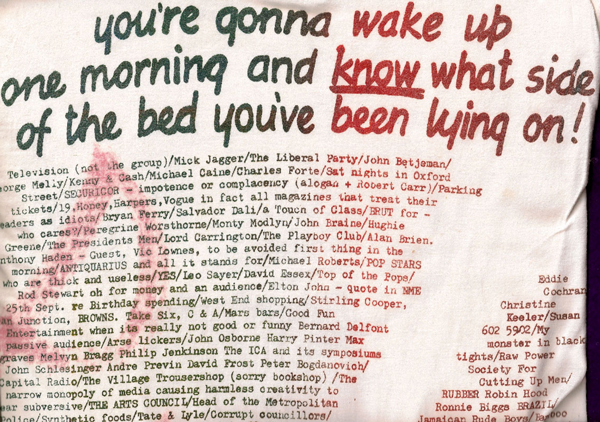



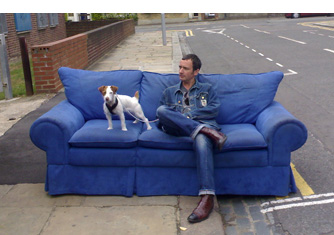






Recent Comments